The Ultimate Pocket Pussy Buying Guide (Feel, Fit, Features & Care)
🐈 The Ultimate Pocket Pussy Buying Guide
Complete Selection Framework: Feel, Fit, Features & Care | By Evan Hunter | Updated October 29, 2025
Folks, buying your first pocket pussy—or upgrading from a disappointing one—should not feel overwhelming or confusing. Yet most buying advice focuses on branding or vague "top 10" lists without explaining what actually matters: how tightness affects sensation, which textures work for your sensitivity level, whether you need suction capabilities, how materials impact both feel and maintenance, and what features justify their cost versus marketing hype.
This comprehensive guide breaks down every decision factor methodically. You will understand sizing conventions (canal diameter, case length, stretch), decode texture patterns and their sensations, compare open versus closed-end designs, evaluate silicone against TPE realistically, learn proper lubrication and care protocols, and match features to your actual priorities rather than assumed preferences. Whether you are a complete beginner exploring male masturbators or an experienced user seeking better choices, you will finish with a clear framework for confident purchasing decisions.
⚕️ Educational Resource Notice: This content is for educational and informational purposes only and does not constitute medical, therapeutic, or professional health advice. The information provided is based on sexual wellness best practices and product knowledge, not medical expertise. Always consult qualified healthcare providers for personal health concerns, medical conditions, or questions about sexual health. If you experience pain, discomfort, allergic reactions, or other adverse effects from any product, discontinue use immediately and seek appropriate medical care.
Quick Answer: Choose by feel first—texture profile, tightness (canal diameter/stretch), and open- vs closed-end suction. Then weigh materials (silicone durability vs TPE softness), features (caps, cases, vibration/warming), size (case length), and care needs. Use water-based lube and dry the core completely after cleaning to avoid odor or mold.
📋 Table of Contents
- Start Here: Quick Picks by Goal
- How These Toys Work (Fast Primer)
- Sizing & Fit: Comfort = Performance
- Texture Library: What Patterns Actually Feel Like
- Suction & Airflow: Open vs Closed End
- Materials & Feel: Silicone vs TPE
- Features That Change the Experience
- Lube Pairing 101: Get This Right
- Cleaning, Drying & Storage
- Decision Flow: Pick in 60 Seconds
- Comparison Grid: Choices at a Glance
- Real-World Scenarios & Use Cases
- Measuring & Conversions for Product Pages
- Care, Warranty & Longevity
- Frequently Asked Questions
Start Here: Quick Picks by Goal
Not ready for the full guide? Match your top priority to these starting points, then read relevant sections for details.
Best for Beginners
Specs: Open-ended, cased design, medium tightness (1.2-1.3" / 3.0-3.3 cm canal), medium texture, mid-range price
Why: Straightforward use, fastest cleanup, manageable sensation, grip assistance from case
Maximum Suction
Specs: Closed-end with adjustable cap, tight canal (0.9-1.1" / 2.3-2.8 cm), chambered textures, silicone or dual-density TPE
Why: Intense vacuum grip, excellent for edging and stamina training, precise control
Easiest Cleaning
Specs: Open-ended, removable sleeve, smooth or light texture, silicone material, simple case or uncased
Why: Rinse-through design, 2-3 hour drying, non-porous material, minimal maintenance time
Travel-Friendly
Specs: Compact case (7-8" / 17.8-20.3 cm), open-ended, neutral exterior, moderate weight
Why: Discreet appearance, quick drying for packing, minimal bulk, TSA-passable design
Realistic Feel
Specs: Anatomical entrance, warming rod compatible, TPE or dual-density material, textured canal mimicking natural anatomy
Why: Skin-like softness, body temperature warmth, visual and tactile realism combined
Long-Term Durability
Specs: Platinum-cure silicone sleeve, reinforced entrance, quality case construction, established brand
Why: 2-5 year lifespan, maintains texture definition, non-porous hygiene, better cost-per-year
Quietest Operation
Specs: Open-ended design (no suction noise), silicone material, solid case construction, no motorized features
Why: Zero suction sounds, minimal friction noise, discreet for shared living spaces
Feature-Rich
Specs: Multiple texture chambers, warming rod included, bullet vibe slot, suction cap, removable/replaceable sleeve
Why: Maximum variety, customizable intensity, upgradeable, experimentation-friendly
Browse TheDildoHub's complete pocket pussies collection and male masturbators to explore options across all categories. For detailed usage guidance, check our how to use a pocket pussy guide.
How These Toys Work: Fast Primer
Understanding basic design elements helps you evaluate products and understand specifications.
Terminology Decoded
Pocket pussy, stroker, sleeve, masturbator: All synonyms for male masturbation toys featuring a sleeve with textured internal canal. "Pocket pussy" typically refers to anatomically-styled entrances; "stroker" is more neutral terminology for the same product category.
Canal: The internal channel you insert into—the textured tunnel that provides sensation. Specifications describe canal diameter (tightness), length, and texture patterns.
Sleeve: The soft material component (silicone or TPE) containing the canal. May be permanently attached to case or removable for cleaning.
Case: Rigid outer shell (usually ABS plastic) that houses the sleeve. Provides grip, structural support, and discreet exterior appearance.
Cased vs Uncased Designs
Cased designs: Sleeve sits inside protective case. Benefits: easier grip control, better angle precision, discreet appearance, structural support prevents collapse during use. Drawbacks: heavier, bulkier, potentially more expensive.
Uncased sleeves: Just the soft sleeve material without rigid case. Benefits: flexible positioning, lighter weight, compact for travel, direct squeeze control. Drawbacks: messier to handle, requires firmer grip, less discreet appearance.
Open-Ended vs Closed-End
Open-ended: Canal passes completely through—air flows freely from entrance to exit. Creates smooth gliding sensation without vacuum pressure. Dramatically faster and easier to clean (rinse-through capability). Less natural suction feel.
Closed-end: Canal terminates in sealed end, often with adjustable air valve or suction cap. Creates vacuum pressure during strokes for intense gripping sensation. Requires thorough internal cleaning. Ideal for edging and pressure enthusiasts.
Removable Sleeves
Higher-quality designs feature sleeves that detach from cases for cleaning. This significantly improves hygiene (access to all surfaces), speeds drying (better airflow), and allows sleeve replacement without buying entirely new toy. Always prefer removable sleeve designs when available.
Where "Feel" Actually Comes From
Sensation results from the interaction of multiple factors:
- Texture patterns: Ribs, nubs, spirals, chambers create varied stimulation as you stroke
- Canal tightness: Diameter and material stretch determine gripping pressure
- Suction/airflow: Open vs closed design changes resistance and pulling sensation
- Material properties: Firmness, stretch, temperature response affect tactile feel
- Lubrication: Viscosity dramatically changes how textures feel and how friction behaves
- Temperature: Warm sleeves feel dramatically different from cold ones
Quality toys optimize all these factors. Budget toys often compromise texture quality or material properties, resulting in disappointing experiences regardless of appearance.
Sizing & Fit: Comfort = Performance
Proper sizing prevents discomfort, enhances sensation, and ensures you can actually use the toy as intended.
Canal Diameter & Stretch: The Critical Spec
Resting diameter vs stretched: Specifications list unstretched canal diameter, but materials stretch significantly. TPE stretches 200-400% of resting size; silicone stretches 100-200%. A 1.0 inch (2.5 cm) resting diameter comfortably accommodates much larger dimensions when stretched.
Comfortable range: Most users find 1.0-1.5 inches (2.5-3.8 cm) canal diameter (before stretching) provides ideal balance of snugness and comfort. This range accommodates average dimensions while providing satisfying grip.
Tight options: Below 1.0 inch (2.5 cm) creates very intense gripping sensation. Great for experienced users who want maximum pressure, but can feel restrictive or uncomfortable for many. Requires generous lubrication and careful entry.
Looser options: Above 1.5 inches (3.8 cm) emphasizes smooth glide and texture rather than tight gripping. Better for users with larger dimensions, those who find tight canals uncomfortable, or anyone who prefers gentle sensation over intense pressure.
Material matters: TPE's extreme stretch makes tight specifications more forgiving. Silicone's lower stretch means you should size up slightly if between two options—better too loose than uncomfortably tight. Learn more about materials in our pocket pussy materials guide.
Case Length & Stroke Room
Compact designs: 7-8 inches (17.8-20.3 cm) case length. Suitable for most users, easier to store, travel-friendly, lighter weight. Potential limitation: less stroke length variety, may feel cramped for users over 7 inches (17.8 cm).
Standard designs: 8-9 inches (20.3-22.9 cm) case length. Accommodates most comfortably with room for full strokes. Balance of portability and usability. Most popular category.
Full-size designs: 9-10+ inches (22.9-25.4+ cm) case length. Maximum stroke variety, never feels constrained, often includes more complex texture zones. Trade-offs: bulkier storage, heavier, more material to clean and dry. Browse full-sized masturbators for larger options.
Matching to your dimensions: Ideal case length = your length + 1-2 inches (2.5-5 cm) minimum. This prevents "bottoming out" (hitting the end during full strokes), which breaks immersion and can be uncomfortable.
Grip & Ergonomics
Cased grip advantages: Hold the case rather than sleeve directly. Reduces hand fatigue significantly during extended sessions. Provides leverage for controlled angle changes. Prevents lube from making grip slippery.
Uncased grip considerations: Must grip soft sleeve material directly. Can create custom squeeze pressure anywhere along canal. More hand fatigue during long sessions. Lube transfer to hands is inevitable—keep towel nearby.
Weight impact: Cased designs typically weigh 1-2 lbs (0.5-1 kg). Heavier toys cause arm fatigue faster. For extended sessions, consider hands-free mounts or lighter uncased designs.
Fit at a Glance
| Specification | Range | Feels Like | Best For |
|---|---|---|---|
| Canal Diameter | 0.8-1.0" (2.0-2.5 cm) | Very tight, intense grip, requires work to insert | Experienced users, pressure seekers, stamina training |
| Canal Diameter | 1.0-1.3" (2.5-3.3 cm) | Snug, balanced grip, comfortable entry | Most users, beginners, everyday use |
| Canal Diameter | 1.3-1.6" (3.3-4.1 cm) | Gentle pressure, emphasizes texture and glide | Larger dimensions, gentler sensation preference, speed play |
| Case Length | 7-8" (17.8-20.3 cm) | Compact, travel-size, limited stroke length | Portability priority, smaller dimensions, discreet storage |
| Case Length | 8-9" (20.3-22.9 cm) | Standard fit, full stroke capability, balanced | Most users, average to above-average dimensions |
| Case Length | 9-10"+ (22.9-25.4+ cm) | Spacious, never constrained, maximum variety | Larger dimensions, full-stroke preference, variety seekers |
| Sleeve Firmness | Soft (Shore 00-10A) | Plush, yielding, hugs around you, collapses under tight grip | Realistic feel priority, gentler sensation, TPE preference |
| Sleeve Firmness | Medium (Shore 10-25A) | Balanced structure, texture stays defined, moderate push-back | Most users, balanced sensation, versatile use |
| Sleeve Firmness | Firm (Shore 25-40A) | Solid feedback, crisp texture edges, doesn't collapse | Precise texture preference, durability focus, silicone users |
💡 Pro Sizing Tip
Match canal tightness to your intended session length. Tighter canals (under 1.1" / 2.8 cm) create intense sensation that may lead to quicker finishes—excellent for stamina training or when time-limited. Medium tightness (1.1-1.4" / 2.8-3.6 cm) provides balanced sensation for extended sessions. Looser canals (over 1.4" / 3.6 cm) allow longer play with less intensity build-up.
Texture Library: What Patterns Actually Feel Like
Texture patterns create the varied sensations that define each toy's character. Understanding what each type delivers helps you choose based on your sensitivity and preferences.
Ribs & Rings
What they are: Circular ridges perpendicular to canal axis, evenly or variably spaced throughout the canal.
Sensation: Rhythmic bumping as you stroke—each ring provides a distinct "bump" sensation. Spacing determines rhythm: tight spacing (0.25-0.5" / 0.6-1.3 cm apart) creates rapid-fire stimulation; wide spacing (0.5-1" / 1.3-2.5 cm apart) creates more pronounced individual bumps.
Best for: Edging practice (consistent rhythm helps control pace), users who enjoy predictable patterns, pairing with medium-viscosity lube for clear definition.
Technique tip: Vary stroke speed to change rhythm perception. Slow strokes emphasize each rib distinctly; fast strokes blend into vibration-like sensation.
Nubs & Beads
What they are: Small raised bumps or spherical protrusions scattered across canal surfaces, creating point-contact stimulation.
Sensation: Distributed stimulation across entire contact area rather than linear rhythm. Each nub creates tiny pressure point. Dense nub patterns feel like constant massage; sparse patterns add occasional accent stimulation.
Best for: High sensitivity users who find ribs too intense, adding variety to smooth sections, users who prefer constant gentle stimulation over rhythmic patterns.
Technique tip: Rotation/twisting strokes engage nubs on all sides of canal simultaneously, intensifying sensation significantly compared to straight strokes.
Spirals & Helixes
What they are: Ridges that wrap around canal in spiral pattern rather than running straight across.
Sensation: Creates natural twisting sensation even during straight in-out strokes. Encourages rotational movement. Some users describe it as "pulling" or "wrapping around" sensation that differs from straightforward in-out feel.
Best for: Users who enjoy variation in stroke technique, pairing with twisting/rotation movements, breaking up monotony of straight strokes.
Technique tip: Try matching spiral direction with intentional rotation—either sync with spiral for amplified effect or counter-rotate for unique sensation.
Chambers & Steps
What they are: Distinct zones with different textures, often separated by diameter changes or texture transitions. Common designs: tight entrance → ribbed middle → smooth deep section.
Sensation: Progression through different experiences in single stroke. Provides variety without needing multiple toys. Each stroke length emphasizes different zones—short strokes stay in entrance zone, long strokes experience all chambers.
Best for: Users who bore easily with single textures, experimental users wanting variety, longer sessions where sensation evolution prevents desensitization.
Technique tip: Vary stroke depth intentionally to focus on preferred chambers. Short strokes emphasize entrance textures; mid-length focuses on middle zone; full strokes give complete experience.
Smooth/Minimal Texture
What it is: Little to no texture—just canal shape and tightness providing sensation.
Sensation: Pure glide and squeeze. All sensation comes from material softness, tightness, and suction rather than texture bumps. Less stimulating than textured options but provides clear, uncluttered feel.
Best for: Users who find textures overstimulating, pairing with thinner lube for maximum sensitivity to material feel, focusing on material quality and tightness rather than texture complexity.
Technique tip: Smooth canals pair excellently with grip pressure variation—changing how tightly you hold the toy becomes primary intensity control.
Texture vs Sensation Pairing Guide
| Texture Type | Sensation Description | Ideal Lube Viscosity | Technique Notes |
|---|---|---|---|
| Ribs/Rings | Rhythmic bumping, predictable pattern, edging-friendly | Medium thickness | Vary speed to change rhythm perception |
| Nubs/Beads | Point stimulation, massage-like, high sensitivity | Medium to thick | Try rotation to engage all sides |
| Spirals/Helixes | Twisting pull, encourages rotation, unique feel | Medium thickness | Experiment with matching or counter-rotating |
| Chambers/Steps | Progressive zones, variety per stroke, anti-monotony | Medium thickness | Control stroke depth for zone focus |
| Smooth/Minimal | Pure glide, material-focused, gentle/clear | Thin to medium | Vary grip pressure as intensity control |
| Mixed/Complex | Multiple patterns combined, high variety, exploratory | Medium thickness | Find sections you prefer, vary stroke length |
📊 Texture Intensity Scale
Gentlest to Most Intense: Smooth → Sparse Nubs → Wide-Spaced Ribs → Dense Nubs → Tight-Spaced Ribs → Complex Multi-Pattern → Extreme Textures (very tight spacing or aggressive designs). Start gentler than you think—you can always move to more intense textures, but overstimulation ruins sessions.
Suction & Airflow: Open vs Closed End
Airflow management fundamentally changes how the toy feels during use and how easy it is to maintain.
Closed-End with Suction Cap: The Complete Experience
How it works: Sealed end with adjustable air valve creates vacuum chamber. As you stroke outward, vacuum pressure builds, creating pulling/"sucking" sensation. Cap adjustment controls how much vacuum builds—fully closed = maximum suction, slightly open = milder effect.
Sensation advantages: Intense gripping feel beyond just material tightness. Realistic "pull" sensation mimics natural suction. Excellent for edging—the grip helps maintain arousal without overwhelming intensity. Provides pressure sensations impossible with open-ended designs.
Adjustability: Start with cap 1-2 turns from fully closed. Gradually close for more suction or open for less. Small adjustments create noticeable changes. Find your sweet spot through experimentation.
Noise management: Suction can create sounds—sputtering, sucking noises, or air release. Reduce noise by: opening cap slightly, using less lube (excess creates sputtering), stroking more slowly and smoothly, or "burping" excess air before fully closing cap.
Cleaning reality: Must flush interior thoroughly—cannot rinse straight through like open-ended. Requires filling canal, shaking/squeezing to dislodge material, repeating several times. Drying takes 4-6 hours minimum. More maintenance effort for superior sensation. See our complete cleaning guide for pocket pussies.
Open-Ended: Speed and Simplicity
How it works: Canal passes completely through toy. Air flows freely, eliminating vacuum effects. Sensation comes purely from texture, tightness, and material properties without suction component.
Sensation characteristics: Smooth, free-flowing glide. No resistance beyond texture and grip. Emphasizes texture clarity since there is no suction to distract. Some users find this provides clearer sensation; others miss the vacuum intensity.
Cleaning advantage: Rinse straight through under running water—takes 2-3 minutes. Air-dries much faster (2-3 hours) because airflow reaches all surfaces easily. Significantly less maintenance burden.
Who should choose: Users prioritizing easy care over maximum sensation features, those who find suction overwhelming or distracting, anyone wanting quick cleanup for frequent use, or travelers needing fast pack-ready turnaround.
Hybrid Designs: Valves and Ports
Some toys feature air ports or valves along the canal length rather than end-cap adjustment. These allow fine-tuning airflow without affecting the entrance or exit. Benefits: more nuanced control, ability to create partial vacuum in specific zones, reduced noise. Trade-off: more complex cleaning around valve mechanisms.
Suction Decision Matrix
Choose Closed-End with Cap if:
- You want maximum intensity and gripping sensation
- Edging and stamina training are priorities
- You are willing to invest more time in cleaning
- Suction/vacuum sensation appeals to you
- You have dedicated drying space and time
Choose Open-Ended if:
- Easy cleaning and fast drying are priorities
- You want frequent-use convenience
- Quiet operation matters (shared living spaces)
- Travel-readiness is important
- You prefer clear texture sensation over suction effects
Materials & Feel: Silicone vs TPE (and Why It Matters)
Material choice affects feel, maintenance, longevity, and cost. Understanding the tradeoffs helps you prioritize correctly.
Platinum-Cure Silicone: The Durable Choice
Feel characteristics: Firmer than TPE—more structured "push-back" sensation. Texture edges stay crisp and defined even under pressure. Less "skin-like" but provides consistent feedback throughout toy's lifespan. Does not compress texture away under tight grip.
Durability: Lasts 2-5 years with proper care. Texture definition does not degrade over time. Resistant to tearing at stress points (entrance, tight texture areas). Non-porous surface resists bacterial colonization better than TPE.
Hygiene advantages: Non-porous = sealed surface with no microscopic holes. Bacteria cannot penetrate material. Easier, more thorough cleaning with simple soap and water. Lower risk of odor development over time.
Maintenance: Simpler than TPE. No renewal powder needed. Faster drying (non-porous surface dries externally rather than needing internal moisture evaporation). More forgiving of occasional maintenance lapses.
Cost consideration: Higher upfront cost ($50-120 typical). Better cost-per-year when longevity factored in. $80 silicone lasting 4 years = $20/year. $40 TPE lasting 12 months = $40/year.
Critical requirement: Must use water-based lubricant only. Silicone-based lube chemically degrades silicone material permanently—not fixable, ruins toy entirely. This is non-negotiable.
TPE (Thermoplastic Elastomer): The Soft Realist
Feel characteristics: Incredibly soft, yielding, most "skin-like" of any synthetic material. Warms to body temperature quickly (within 1-2 minutes). Texture edges compress readily, creating gentler sensation. Feels plush and enveloping.
Stretch capacity: Extreme stretch (200-400% of resting size) makes sizing more forgiving. Tight specifications feel less restrictive in TPE than silicone. Accommodates wider size range comfortably.
Realism advantage: For users prioritizing realistic feel, TPE delivers best hand-feel and immediate warmth. Closest approximation to natural tissue texture available in current materials.
Porosity challenge: Porous structure means microscopic holes throughout material. Can harbor bacteria if not cleaned meticulously and dried completely. Requires more diligent hygiene practices than silicone.
Maintenance requirements: Thorough cleaning essential. Complete drying critical (4-6+ hours). Must apply renewal powder (cornstarch or specialized powder) after each drying to maintain surface texture and prevent tackiness. Skipping powder makes surface sticky and unpleasant.
Lifespan: 6-18 months typical depending on use frequency and care quality. Progressive softening over time. Texture definition gradually diminishes. Entrance area most prone to tearing after 6-12 months of regular use.
Cost advantage: Lower initial price ($25-60 typical) makes experimentation affordable. Good for discovering preferences before investing in premium materials. Budget-friendly for variety seekers who replace toys regularly.
Dual-Density Designs: Best of Both
Some premium toys use dual-density construction: firmer outer layer (structure and durability) with softer inner canal layer (plush feel). Attempts to combine silicone durability with TPE-like softness. More expensive but provides compelling compromise for users wanting both characteristics.
Silicone vs TPE Comparison
| Factor | Silicone | TPE | What It Means for You |
|---|---|---|---|
| Feel/Texture | Firmer, crisp edges, consistent feedback | Plush, soft, skin-like, yielding | Silicone = precise texture; TPE = realistic softness |
| Durability | 2-5 years typical | 6-18 months typical | Silicone lasts 3-5x longer with proper care |
| Porosity | Non-porous (sealed surface) | Porous (microscopic holes) | Silicone easier hygiene; TPE needs meticulous care |
| Maintenance | Simple: clean, dry, store | Complex: clean, dry fully, powder, store | Silicone saves time per use; TPE requires discipline |
| Temperature | Slower to warm (5-10 min body contact) | Fast warming (1-2 min body contact) | TPE feels realistic immediately; silicone needs pre-warming |
| Lube Compatibility | Water-based ONLY (silicone lube destroys it) | Water-based or silicone-based both work | Silicone more restrictive but protects material |
| Cost (Initial) | $50-120+ typical | $25-60 typical | TPE budget-friendly upfront; silicone investment |
| Cost (Per Year) | $15-30/year | $30-50/year | Silicone better long-term value despite higher initial cost |
💡 Material Selection Strategy
First toy? Choose TPE to discover preferences affordably—texture types, tightness, features. Once you know what you like, invest in quality silicone version of your preferred specifications. This two-phase approach minimizes expensive mistakes while building toward durable long-term solution.
Temperature Play Considerations
Warming makes major difference: Both materials benefit from pre-warming, but TPE's fast natural warming means you can skip it. Silicone really needs 5-10 minute warm water bath or warming rod to feel pleasant initially.
Methods: Warm water bath (remove sleeve, submerge 5-10 minutes, test on forearm), warming rods (insert into canal for same duration), or body heat warming (TPE warms naturally during first minute of use).
Never use: Microwave (creates dangerous hot spots), boiling water (degrades TPE, may warp silicone), or heat guns/hair dryers (uneven heating, material damage). Gentle warmth only.
Features That Change the Experience
Beyond basics, optional features can significantly enhance use—if you will actually use them.
Cases & Caps: Control and Discretion
Benefits: Easier grip (hold case not sleeve), structural support prevents canal collapse, discreet exterior (looks like flashlight or neutral container), better angle control, some include suction adjustment caps.
Drawbacks: Added weight (1-2 lbs / 0.5-1 kg typical), less flexible positioning, more expensive, cleaning slightly more complex (disassemble components).
Who should prioritize: Beginners (grip assistance valuable), users wanting suction capability (requires case structure), anyone concerned about discreet storage, those who prefer controlled precision over flexible improvisation.
Vibration: When It Helps
Implementation: Typically bullet vibe slots on case exterior or canal walls. Bullet vibes sold separately in most cases. Vibration adds surface buzzing to internal texture sensation.
Realistic expectations: Vibration on male toys provides accent sensation, not primary stimulation. Do not expect vibrating toys to feel dramatically different from non-vibrating—texture and tightness remain dominant factors. Enhancement, not transformation.
Practical considerations: Battery management (charging/replacing), noise (vibration motor sound), cleaning around vibe pockets, weight addition. Browse TheDildoHub's vibrating masturbators collection for built-in options.
Who benefits most: Users wanting variety without buying multiple toys, those who enjoy vibration from other toys, experimenters curious about sensation combinations. Skip if you are ambivalent—non-vibrating version will be cheaper and simpler.
Warming: Realism Boost
Two approaches: Pre-warming with warm water or warming rods (best method), or built-in electric warming (rare, more expensive).
Impact: Transforms cold clinical feel into realistic body-temperature experience. Makes silicone feel more TPE-like. Significant comfort improvement, especially for first strokes.
Consideration: Pre-warming adds 5-10 minutes to setup. Built-in warming adds cost and battery/charging management. Assess whether extra realism justifies extra effort.
Mounts & Hands-Free Options
Types: Suction cup bases (attach to smooth surfaces), furniture clamps, shower mounts, or floor stands.
Benefits: Eliminates arm fatigue during extended sessions, frees hands for other activities, enables different position experimentation, excellent for stamina training with sustained hands-free use.
Requirements: Toy must have mount-compatible design (typically threaded base or suction-cup integration). Not all toys work with all mounts—verify compatibility before purchasing mounting accessories separately.
Safety note: Ensure secure mounting—toy detaching mid-use creates injury risk. Test stability before full use.
Anatomical Entrance Styles
Realistic styles: Anatomically detailed entrances mimicking natural appearance. Visual realism enhances experience for many users. Pornstar masturbators feature licensed molds of specific performers.
Oral-style entrances: Lip textures and oral cavity designs. Focus on entry sensation and visual representation. Typically shorter effective stroke length. Explore mouth masturbators for specialized oral designs.
Anal-style entrances: Designed to mimic anal textures and tightness. Often feature tighter canals and specific texture patterns. Browse ass masturbators for this category.
Neutral entrances: Non-anatomical openings—simple holes or abstract designs. Functionally equivalent canal but without visual realism. Some users prefer neutrality; others find realism enhances immersion.
Texture bands/"teeth": Soft ribbed bands in oral-style toys. NOT rigid or sharp—designed to simulate texture without discomfort. If concerned, read reviews confirming comfort before purchase.
Lube Pairing 101: Get This Right
Proper lubrication dramatically affects sensation, comfort, and material longevity.
Universal Rule: Water-Based Lube
Why water-based: Safe for all materials (silicone, TPE, latex, all others). Easy cleanup—rinses completely with water. Will not damage toys. Compatible with barriers if used. Universal compatibility eliminates guesswork.
Critical warning: Never use silicone-based lube on silicone toys. Chemical reaction causes permanent surface degradation, stickiness, and material breakdown. Not reversible—ruins toy completely. This rule is absolute.
TPE flexibility: Technically compatible with silicone lube, but silicone lube is harder to clean from porous TPE. Stick with water-based for simplicity unless you have specific reason to use silicone lube.
Browse quality options at TheDildoHub's water-based lubricants collection.
Viscosity Matching Guide
Thick water-based lube: Cushioning, long-lasting, does not drip. Best for: tight canals (reduces friction in restricted space), heavily textured canals (cushions aggressive patterns), sensitive users (buffer between you and intense textures), extended sessions (less frequent reapplication).
Medium water-based lube: Balanced glide and sensation. Best for: medium-tightness canals, moderate textures, average sessions, most users' default choice. Versatile—works well for most situations without specialization.
Thin water-based lube: Maximum sensitivity, emphasizes texture, easy cleanup. Best for: looser canals (do not need cushioning), smooth or lightly textured canals, speed play (minimal resistance), quick cleanup priority. Less cushioning means more direct sensation transfer.
Application Protocol
Initial application: Approximately one tablespoon (15ml) inside canal—squirt directly into entrance, let gravity pull deeper. Add pea-sized amount at entrance. Sounds excessive but prevents friction and protects material.
Entry technique: Extra dab at entrance prevents "catch"—the uncomfortable dry friction as you enter. Entrance experiences most friction and benefits from generous lubrication.
Re-lubing mid-session: When friction increases or sensation dulls, add more. Do not stop completely—slow strokes, apply at entrance, continue. Most sessions need 1-2 re-applications depending on lube viscosity and session length.
Amount by canal type: Tight canals need more lube initially (distributed over larger surface contact area). Open-ended designs may need slightly less (some lube exits, requiring re-application). Closed-end traps lube effectively (less reapplication needed).
What to Avoid
- Silicone lube on silicone toys: Destroys material permanently. Absolute prohibition.
- Oil-based lubes: Difficult to clean completely, can degrade TPE over time, incompatible with barriers. No advantages worth the hassles.
- Petroleum jelly/vaseline: Same issues as oil-based plus does not provide good glide for this use. Skip entirely.
- Household substitutes: Lotion (contains irritants, dries quickly), soap (dries, irritates sensitive tissue), cooking oils (difficult cleanup). Buy proper lube—worth the minimal cost.
💧 Lube Life Extension Tips
Make lube last longer in session: seal entrance with slight grip pressure (reduces lube escaping on outstrokes), re-wet entrance specifically rather than adding more inside (targets highest-friction area), keep water bottle nearby to add few drops water to reactivate water-based lube (extends without adding more product). These techniques reduce lube consumption without sacrificing comfort.
Cleaning, Drying & Storage: No Mold, No Odors
Proper maintenance extends toy lifespan and ensures hygienic use. For complete step-by-step protocols, see our detailed cleaning strokers and masturbators guide.
The 5-Minute Post-Use Routine
- Rinse immediately (30 seconds): Hold sleeve under warm running water. For closed-end, fill canal and squeeze repeatedly to flush interior. Continue until water runs clear.
- Apply cleaner (30 seconds): Use mild, unscented soap or specialized toy cleaner from TheDildoHub's toy cleaners collection. Avoid harsh detergents, antibacterial soaps with triclosan, or scented products that leave residue.
- Scrub textures (2 minutes): Reach fingers inside to scrub all textured areas thoroughly. For deep or complex canals, use soft-bristle cleaning brush designed for sleeves. Do not miss corners, chambers, or tight texture zones.
- Final rinse (2 minutes): Rinse exhaustively until absolutely no soap residue remains. Run water through for 1-2 minutes minimum. Soap residue causes skin irritation during next use.
- Initial dry (1 minute): Shake vigorously to remove excess water. Pat exterior dry with lint-free towel. Set up for air-drying.
Then wait 4-6 hours: Complete interior air-drying is critical. Prop sleeve open-end-up or use drying stand designed for masturbators. Ensure good airflow. Thick-walled or closed-end designs may need longer.
Drying: The Critical Step Most Skip
Why it matters: Porous TPE especially (but silicone too) can harbor bacteria if moisture remains. Incomplete drying causes mold growth, mildew, and permanent odors that ruin the sleeve. Once odor sets in, it is nearly impossible to remove.
How to verify dryness: After drying period, reach inside manually. Interior should feel completely dry to touch—no dampness, no cool spots, no moisture. Any wetness means continue drying.
Drying acceleration: Use fan (not heated air) to improve circulation. Position near (not touching) heating vent in winter. Never use direct heat—degrades materials. Patience is essential—rushing risks bacterial growth.
Open-end advantage: Air reaches all surfaces easily. Typical drying: 2-3 hours. Closed-end challenge: Air cannot circulate through sealed end. Must dry from entrance only. Typical drying: 4-6 hours minimum, sometimes 8+ for thick designs.
Material-Specific Post-Drying Care
TPE sleeves: After complete drying, lightly dust entire surface with cornstarch or specialized renewal powder. This prevents surface tackiness and maintains soft, skin-like texture. Use powder puff or clean hands to distribute evenly. Do not skip—unpowdered TPE becomes sticky and unpleasant within days.
Silicone sleeves: No powder needed. Silicone maintains smooth surface naturally. Some users apply light cornstarch dusting if surface becomes tacky (rare with quality silicone), but this is optional, not required.
Storage Best Practices
Environment: Cool, dry location away from direct sunlight (UV degrades materials over time), excessive heat (softens and warps), or humid areas (promotes mold even in dried toys).
Separation requirement: Store separate from other toys. Different materials touching can cause chemical reactions—silicone against certain plastics degrades both. Keep individual toys isolated.
Container choices: Original packaging (if breathable), cloth/fabric bags (allow air circulation), or dedicated storage boxes with ventilation. Avoid completely sealed plastic bags (trap any residual moisture).
Cap positioning: Store closed-end toys with suction caps slightly open (1-2 turns) to allow continued air circulation. Fully sealed can trap residual moisture even after drying.
Dust protection: Exposed toys collect dust that sticks to silicone and TPE. Store covered when not actively drying, but ensure covering is breathable.
Troubleshooting Common Issues
Persistent odor despite cleaning: Indicates trapped bacteria from incomplete past drying or inadequate cleaning. Try: baking soda paste (apply, let sit 30 minutes, rinse thoroughly), specialized toy cleaner with antibacterial properties, or soaking in dilute hydrogen peroxide (1 part peroxide : 10 parts water, 30 minutes max). If odor persists after aggressive treatment, retirement may be necessary.
Sticky surface (TPE): Normal without renewal powder. Apply powder liberally after complete drying. If stickiness persists despite powdering, indicates material degradation—time to replace.
Tacky surface (silicone): Unusual for quality silicone. May indicate: incomplete rinsing (soap residue), exposure to incompatible lube or cleaner, or material degradation. Try cornstarch dusting. If tackiness continues, consider replacement.
Discoloration: Minor yellowing normal over time, especially with silicone. Significant discoloration (dark spots, uneven patches) may indicate mold or material breakdown. Severe cases warrant retirement.
When to Retire a Sleeve
- Persistent odors after thorough cleaning and treatment attempts
- Material tearing, especially at entrance or high-stress texture points
- Significant texture flattening (ribs/nubs no longer defined)
- Surface permanently sticky (TPE) or tacky (silicone) despite proper care
- Visible mold or mildew that does not respond to cleaning
- Discoloration indicating material breakdown
- Noticeable change in material flexibility (becoming brittle or excessively soft)
Do not risk hygiene or comfort with degraded materials. Quality replacement ensures both pleasure and safety.
Decision Flow: Pick in 60 Seconds
Quick Decision Tree
Priority: Hate Cleanup?
→ Open-ended sleeve, removable design, light to medium texture, silicone material preferred
Reasoning: Rinse-through cleaning (2-3 minutes), fast drying (2-3 hours), non-porous silicone simplifies maintenance
Priority: Want Edging & Maximum Suction?
→ Closed-end with adjustable suction cap, chambered textures, medium to tight canal (1.0-1.2" / 2.5-3.0 cm)
Reasoning: Vacuum grip intensity aids stamina training, chambers provide varied sensation zones, tight canal enhances pressure
Priority: Complete Beginner?
→ Cased design, medium tightness (1.2-1.3" / 3.0-3.3 cm), medium texture complexity, open-ended for easy care
Reasoning: Case provides grip assistance, medium specs prevent overwhelming sensation or fit issues, open-end simplifies learning curve. Check our usage guide for tips.
Priority: Durability First?
→ Platinum-cure silicone sleeve, quality brand, reinforced entrance design, commitment to water-based lube only
Reasoning: 2-5 year lifespan, texture does not degrade, better cost-per-year despite higher initial investment
Priority: Travel & Portability?
→ Compact case (7-8" / 17.8-20.3 cm), open-ended, neutral exterior, silicone material
Reasoning: Discreet appearance, quick-drying for re-packing, less bulk, silicone tolerates temperature variations better
Priority: Most Realistic Feel?
→ TPE material, anatomical entrance, warming rod compatible, textured canal mimicking natural features
Reasoning: TPE provides skin-like softness, warms immediately, visual and tactile realism combined
Priority: Quiet Operation (Shared Living)?
→ Open-ended (no suction sounds), silicone material (less friction noise), solid case construction
Reasoning: Eliminates suction/vacuum noises, silicone creates less friction sound than TPE, quality cases do not creak
Priority: Budget-Conscious?
→ TPE material, straightforward design, established brand, avoid excessive features
Reasoning: Lower upfront cost ($25-60), still quality experience, save money for lube and cleaner essentials
Comparison Grid: Choices at a Glance
| Design Choice | Pros | Cons | Best For |
|---|---|---|---|
| Open-Ended Sleeve | Fast cleanup (2-3 min), free-flow glide, quick drying (2-3 hrs), no suction noise | Less natural suction sensation, potentially messier (lube exits) | Easy-care priority, beginners, frequent use, quiet operation, travelers |
| Closed-End + Suction Cap | Strong vacuum sensation, excellent edging control, intense grip, realistic pull | More cleaning steps (must flush interior), longer drying (4-6 hrs), potential noise | Suction lovers, stamina training, intensity seekers, pressure enthusiasts |
| Silicone Sleeve | Durable (2-5 years), crisp texture, non-porous (better hygiene), simple care, maintains definition | Firmer feel (less realistic), higher cost ($50-120+), requires water-based lube only | Long-term value, texture precision, easy maintenance, durability focus |
| TPE Sleeve | Ultra-soft (most realistic), stretchy (forgiving sizing), lower cost ($25-60), quick warming | Porous (needs powder), shorter lifespan (6-18 months), more care steps, gradual degradation | Softness priority, realistic feel, budget-conscious, experimentation, variety seekers |
| Cased Design | Better grip control, precise angles, discreet exterior, structural support, often includes suction | Bulkier storage, heavier (1-2 lbs), less flexible positioning, higher cost | Beginners (grip help), precision control, discreet appearance, suction features |
| Uncased Sleeve | Flexible angles, compact/portable, lighter, direct squeeze control, lower cost | Messier handling (lube transfer), requires direct grip (fatigue), less discreet appearance | Travelers, minimalists, experienced users, flexible positioning, budget buyers |
| Add-On Warming/Vibration | Enhanced realism (warming), variety (vibration), customizable intensity, experimental fun | Extra cost ($20-40+ for accessories), more setup steps, battery/charging needs, potential noise | Experimenters, realism seekers, feature enthusiasts, variety lovers |
Real-World Scenarios & Use Cases
Matching toys to actual life situations rather than abstract preferences.
Scenario: First Pocket Pussy Purchase
Recommended specs:
- Design: Cased, open-ended
- Canal diameter: 1.2-1.3" (3.0-3.3 cm) medium tightness
- Texture: Medium complexity—mix of ribs and smooth sections
- Material: TPE (budget-friendly learning) or silicone (if maintenance-averse)
- Length: 8-9" (20.3-22.9 cm) standard
- Features: Keep simple—no vibration or complex features yet
Reasoning: Medium everything prevents overwhelming sensation or disappointing looseness. Open-end simplifies learning proper cleaning. Case provides grip support during learning curve. Once comfortable, you will know which direction (tighter/looser, more/less texture, suction or not) appeals for next purchase. Start with beginner-friendly options.
Scenario: Sensitive User
Recommended specs:
- Design: Open-ended to avoid intense suction
- Canal diameter: 1.3-1.5" (3.3-3.8 cm) on looser side
- Texture: Smooth or sparse nubs—avoid tight-spaced ribs
- Material: Softer TPE or medium-firm silicone
- Lube: Thicker water-based for cushioning
- Technique: Lighter grip, slower pace, shorter sessions
Reasoning: Gentler specifications across the board reduce overstimulation risk. Thick lube cushions remaining texture. Technique adjustments provide additional intensity control.
Scenario: Stamina Training & Edging Practice
Recommended specs:
- Design: Closed-end with precise suction cap
- Canal diameter: 1.0-1.2" (2.5-3.0 cm) tight for challenge
- Texture: Chambered design with progressive intensity zones
- Material: Silicone (consistent feedback, will not degrade mid-training)
- Features: Consider timer app or visual cues for interval practice
Training protocol: Tempo ladders (slow 2 min → moderate 2 min → fast 1 min → repeat), pause intervals when approaching climax (stop 30-60 seconds), suction variation (high suction on slow strokes, reduced on fast strokes). Challenges adaptation and builds control.
Scenario: Partner-Assisted Play
Recommended specs:
- Design: Cased for easier partner control
- Canal diameter: Medium (1.2-1.4" / 3.0-3.6 cm)
- Texture: Varied chambers for exploration
- Material: Either works—prioritize other factors
- Features: Consider toys designed for easier partner grip
Communication essentials: Discuss boundaries before starting, establish clear feedback signals (verbal or hand signals for speed/pressure adjustments), agree on rhythm communication method, confirm comfort frequently, have safe word or stop gesture. Consent and communication are fundamental, not optional.
Scenario: Small Spaces or Shared Living
Recommended specs:
- Design: Open-ended (no suction noise), compact case
- Canal diameter: Medium (noise from extreme tightness)
- Texture: Moderate (extreme textures can create friction sounds)
- Material: Silicone (less friction noise than TPE typically)
- Storage: Discreet case, lockable if needed
Additional considerations: Establish private time boundaries with housemates, use towels to muffle any sounds, consider white noise (fan, music) for additional privacy, ensure complete drying before storage (prevents odor that compromises discretion).
Scenario: Frequent Traveler
Recommended specs:
- Design: Compact case (7-8" / 17.8-20.3 cm), open-ended
- Canal diameter: Medium (less extreme = less memorable in X-ray)
- Texture: Moderate complexity
- Material: Silicone (better durability during transport, tolerates temperature variation)
- Accessories: Travel-size lube, portable toy cleaner
Travel tips: Ensure completely dry before packing (moisture during travel = mold risk), pack in sealed bag separate from other items, store in checked luggage when possible (avoids awkward carry-on inspection), neutral exterior case reduces attention, have cleaning supplies at destination.
Measuring & Conversions for Product Pages
Understanding manufacturer specifications helps you evaluate products accurately.
Common Specification Terms
Canal diameter / Internal diameter: Resting measurement of canal opening, typically in inches. This is PRE-STRETCH measurement. Materials stretch significantly during use.
Case length / Overall length: Total toy length from end to end. Does NOT equal usable stroke length (subtract 1-2 inches for case walls, end caps).
Insertable length / Canal depth: Actual canal depth—how far you can insert. More useful than overall length for fit assessment.
Weight: Typically in pounds or ounces (US) or grams/kg (international). Helps assess portability and hand fatigue potential.
Conversion Reference
Length conversions:
- 7 inches = 17.8 cm
- 8 inches = 20.3 cm
- 9 inches = 22.9 cm
- 10 inches = 25.4 cm
Diameter to circumference (when only diameter given):
- Circumference = Diameter × π (3.14159)
- 1.0" diameter = ~3.14" circumference (8.0 cm)
- 1.2" diameter = ~3.77" circumference (9.6 cm)
- 1.5" diameter = ~4.71" circumference (12.0 cm)
Weight conversions:
- 1 lb = 16 oz = ~454 grams
- 2 lbs = 32 oz = ~907 grams
Reading Spec Sheets
Look for: Insertable length (not just overall), canal diameter at entrance (not widest point unless specified), material type (silicone vs TPE), case material if applicable, removable sleeve confirmation, open vs closed-end design, weight for portability assessment.
Red flags: Missing critical specs (canal diameter, material type), vague material descriptions ("skin-safe elastomer" without specifics), unrealistic measurements, no maintenance guidance provided.
Compare carefully: Different brands measure differently. One brand's "length" might be overall case; another's might be insertable. Read descriptions thoroughly rather than assuming consistency across brands.
Care, Warranty & Longevity
Typical Lifespan Ranges
TPE sleeves: 6-18 months with proper care. Lifespan factors: use frequency (daily use = shorter lifespan), cleaning thoroughness (excellent care extends to 18 months, poor care shortens to 6 months), storage conditions (cool/dry extends, heat/moisture shortens).
Silicone sleeves: 2-5 years with proper care. Similar factors affect lifespan but silicone's durability means less dramatic variation. Most silicone toys reach 3-4 years even with regular use and good-not-perfect care.
Cases and hardware: Often outlast sleeves significantly. Quality ABS plastic cases last 5+ years. Suction caps and valves may wear faster (1-3 years) but some brands sell replacement parts.
Signs of Normal Wear vs Defect
Normal wear: Slight texture softening over many months (TPE), minor discoloration (yellowing especially for silicone), entrance area showing more wear than deep canal (highest stress point), need for renewal powder increasing frequency (TPE tackiness).
Manufacturing defects: Seams splitting within first month, texture tearing without excessive force, material separating from case, suction caps failing to seal when new, strong chemical odor that does not dissipate after first cleaning, texture inconsistencies (ribs different spacing/height).
Premature failure (care-related): Tearing within 2-3 months (usually insufficient lube causing friction damage), persistent odor within weeks (incomplete drying after use), surface degradation (wrong lube type on silicone), rapid texture flattening (excessive grip force).
Warranty Expectations
Typical coverage: 30-90 days for manufacturing defects on quality brands. Covers: material separation, seam splitting, case cracking, valve/cap failures when new. Does NOT cover: normal wear, user damage (improper cleaning, wrong lube, physical damage), hygiene issues (odor from poor drying).
Documentation: Keep purchase receipts, photograph defects clearly, contact manufacturer before attempting repairs, follow warranty claim procedures precisely. Most brands require proof of purchase and photos before authorizing returns/replacements.
Realistic expectations: Do not expect warranties on consumable items. Sleeves are consumables—they wear out. Defects are different from wear. Legitimate defects usually appear quickly (first few uses); wear develops over time.
Battery Safety for Motorized Features
Built-in batteries: Follow manufacturer charging instructions precisely. Do not overcharge (disconnect when full). Store partially charged (30-70%) for long-term storage, not fully drained or fully charged. Most motors last 2-3 years with proper battery care.
Replaceable batteries: Remove batteries if storing toy unused for 30+ days (prevents corrosion from battery leakage). Use quality batteries (name brands less prone to leakage). Replace entire set when changing (do not mix old and new batteries).
Warming rod safety: Never exceed recommended heating time (typically 5-10 minutes). Test temperature on forearm before inserting in sleeve. Unplug after heating—do not leave running unattended. Store cool and dry when not in use.
When to Replace
Mandatory replacement indicators: Material tearing (creates bacteria harbors), persistent odor after aggressive cleaning (indicates embedded bacteria), significant discoloration or cloudiness (material breakdown), texture completely flattened (no longer provides intended sensation), surface permanently sticky/tacky despite proper care.
Optional replacement indicators: You are simply tired of it (variety is valid reason), texture worn but not completely flat (reduced sensation but still functional), minor cosmetic issues that do not affect hygiene or function, upgrading to better material or design.
Do not wait too long: Using degraded sleeves risks skin irritation from material breakdown or bacterial growth. Better to replace slightly early than continue using questionable toy.
Frequently Asked Questions
Ready to Pick Your Perfect Feel?
Shop TheDildoHub for pocket pussies, masturbators, and all essential accessories with complete confidence using this guide's framework.
🛍️ Browse pocket pussies, mouth masturbators, and all male masturbators
🌟 Explore pornstar designs, vibrating options, and full-sized models
💦 Stock essentials: water-based lubricants and toy cleaners
📚 Learn more: How to use guide, cleaning guide, Fleshlight comparison
✅ Discreet shipping from California in plain, unmarked packaging
💳 Discreet billing appears neutral on statements—details on our shipping and privacy page
🎁 Free sexy gift with every order as our thank-you
💬 Friendly, judgment-free support to help you choose confidently
📦 Quick handling and reliable US delivery from our California warehouse
⭐ 4.8/5 stars on Trustpilot—read real reviews at our Trustpilot page
You know what matters now—choose with confidence.
About the Author: Evan Hunter
I am a sexual wellness expert and Strategic Partnerships Manager at The Dildo Hub, based in Huntington Beach, California. With years of experience in the adult wellness industry, I have helped thousands of people navigate the overwhelming landscape of male masturbators to find products that actually match their priorities rather than marketing hype.
My approach focuses on education over sales—understanding how materials, textures, and features create real-world experiences rather than assuming more expensive or more complex automatically means better. Whether someone is buying their first pocket pussy or upgrading after disappointing purchases, I provide frameworks for informed decision-making based on actual priorities: sensation preferences, maintenance tolerance, budget constraints, and lifestyle factors.
Expertise areas: Material science and feel characteristics (silicone vs TPE properties and tradeoffs), sizing conventions and fit assessment, texture pattern analysis and sensation mapping, suction mechanics and airflow design, lube compatibility and viscosity matching, maintenance protocols for longevity, troubleshooting common usage and care issues, and matching product specifications to user priorities and lifestyles.
"The 'best' pocket pussy is the one that matches YOUR priorities—feel, maintenance, budget, features—not someone else's generic ranking. Understanding what creates sensation and how materials behave lets you choose confidently rather than guessing. Every specification listed in this guide matters in practice; none are just marketing fluff."
Review process: This comprehensive guide was fact-checked for accuracy on material properties, sizing conventions, care protocols, and safety guidelines to ensure you receive reliable, trustworthy information for confident purchasing decisions.
Explore more
- Anal Care
- anal lube
- Anal Lubricants
- anal play
- anal toys
- animal dildos
- Backdoor Play
- best anal lube
- butt plug
- Desensitizing Lubricant
- dildos
- dog dildos
- fantasy dildos
- how to choose a dildo
- how to clean your sex toys
- how to measure dildos
- how to use a dildo
- how to use dildos
- how to wear a butt plug
- Hybrid Lubricant
- inflatable dildos
- Intimacy Tips
- Intimate Care
- lubricants
- monster dildos
- Oil-Based Lubricant
- Personal Lubricant
- realistic dildos
- Sex Toys
- Sexual Health
- sexual wellness
- Silicone-Based Lubricant
- squirting dildos
- suction cup dildos
- thrusting dildos
- vibrating dildos
- vibrators
- water-based lubricant


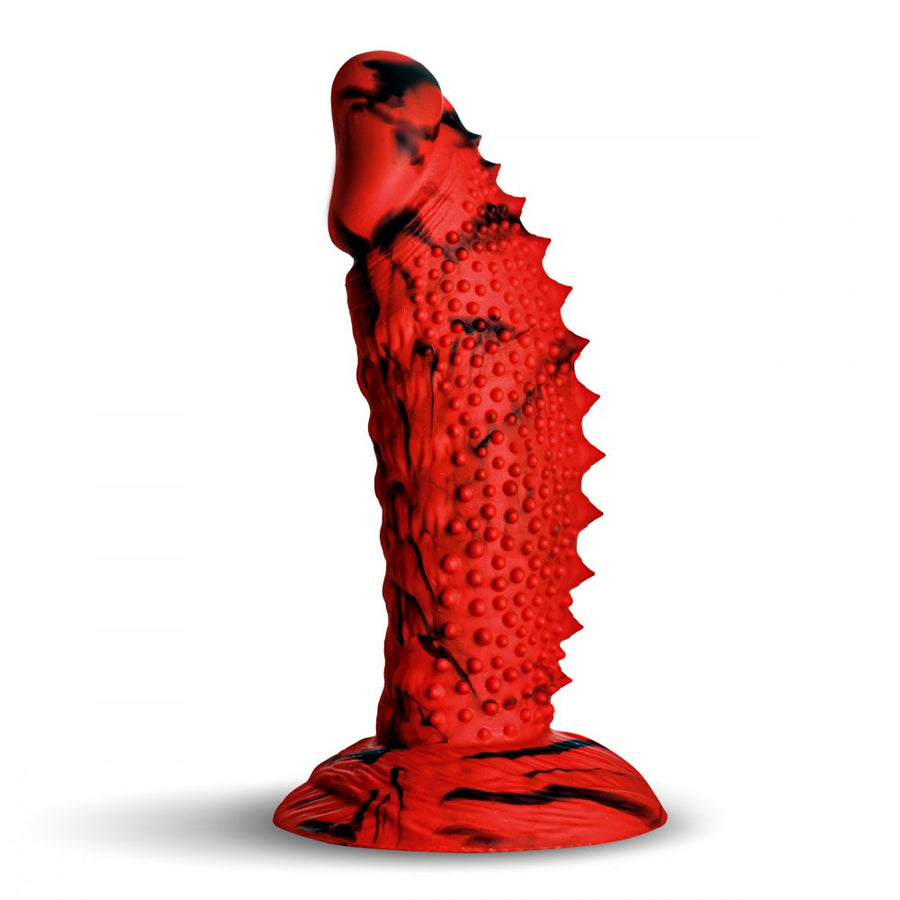
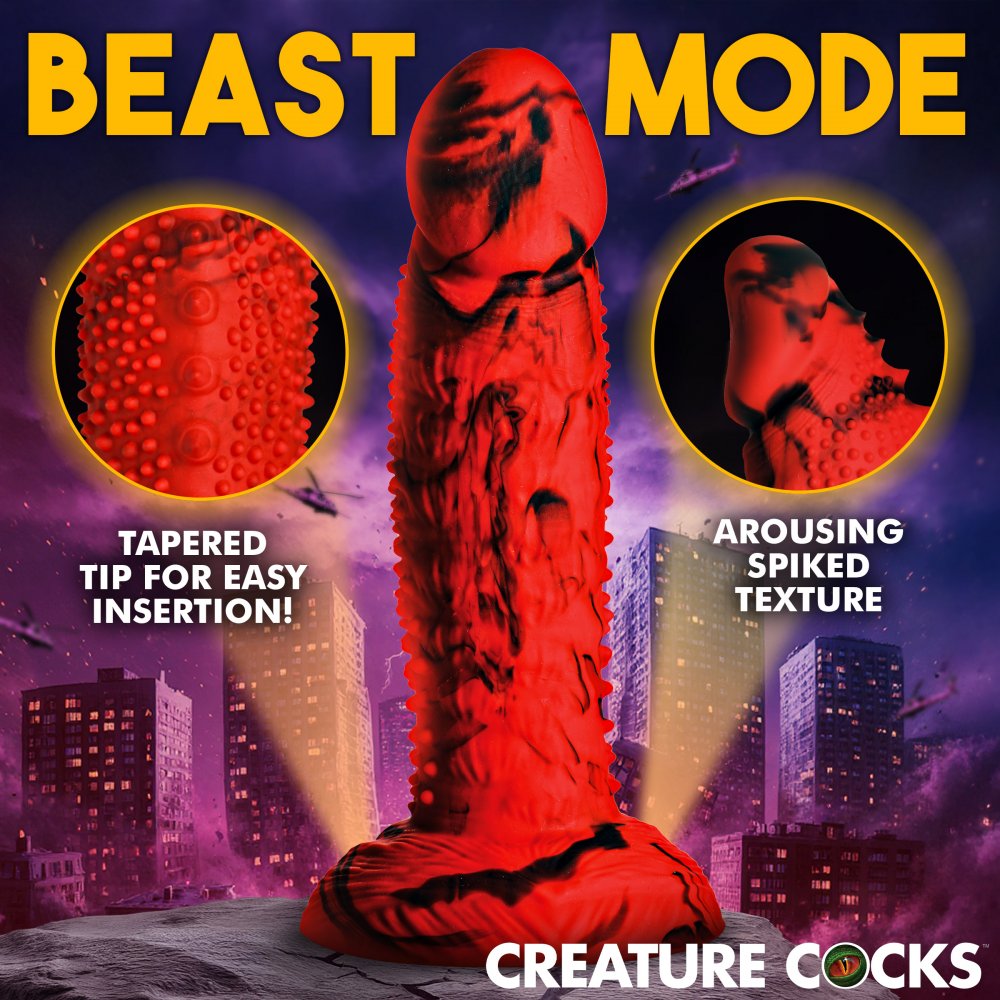
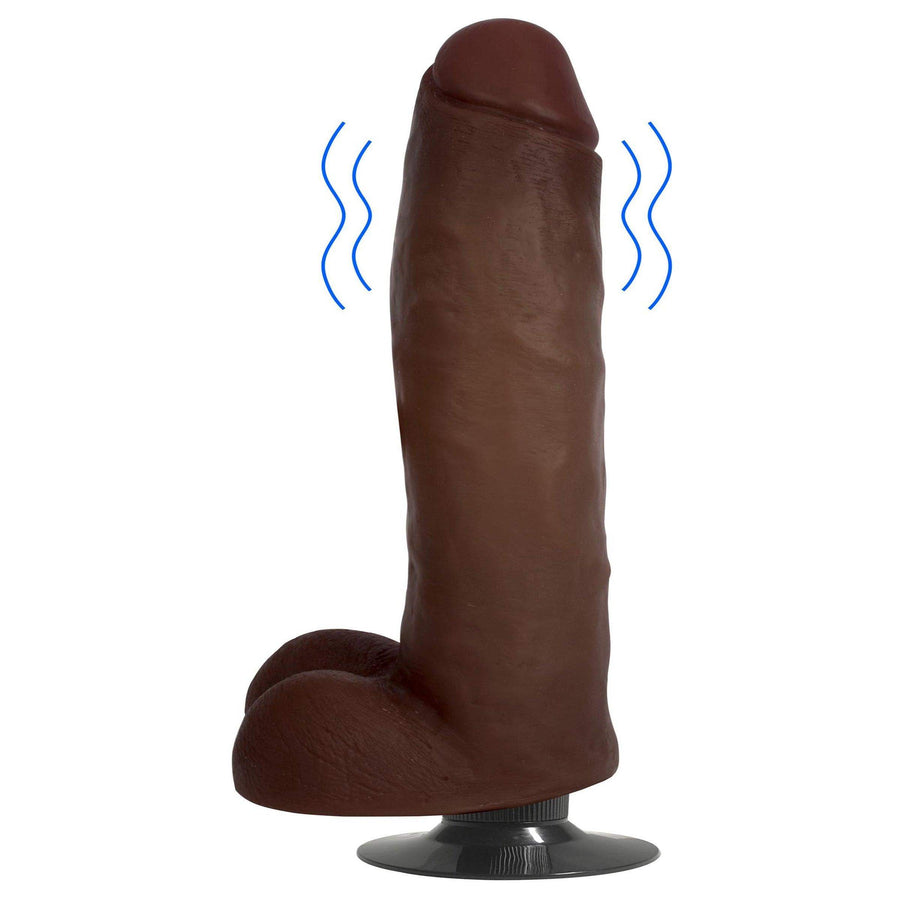
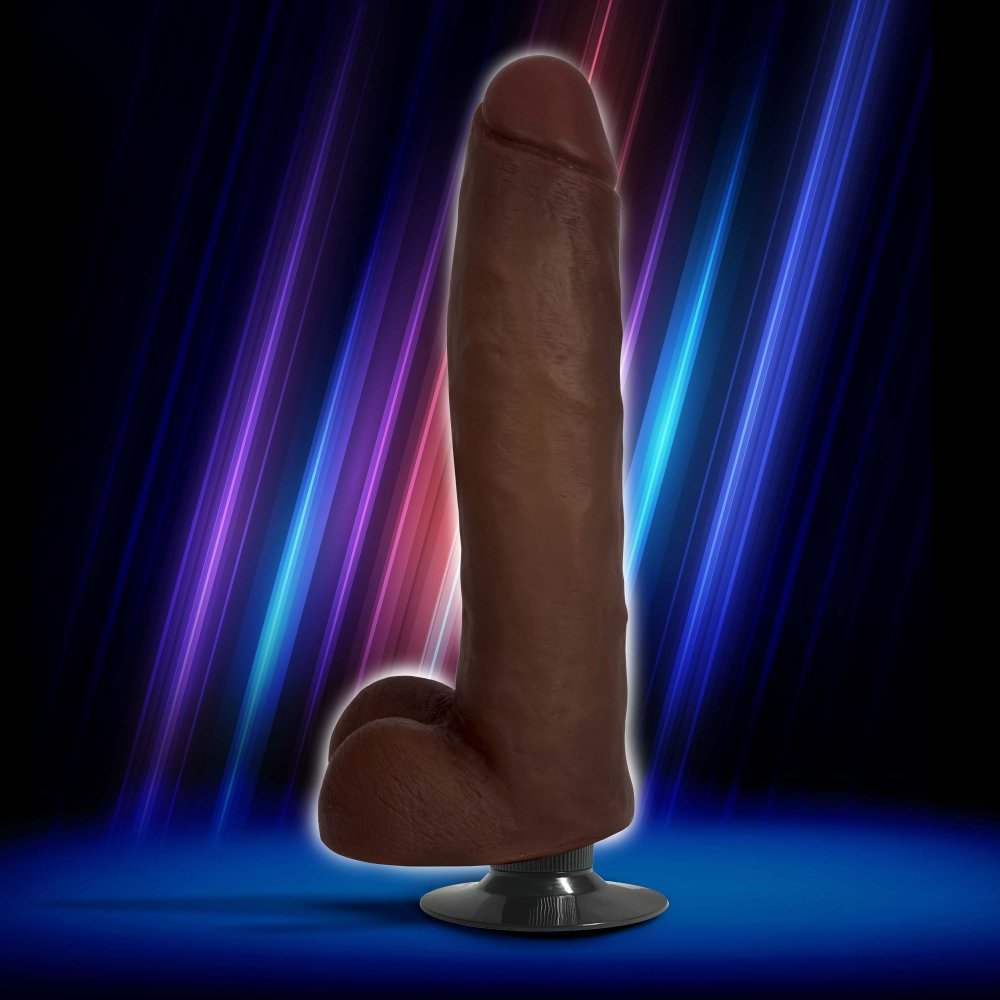
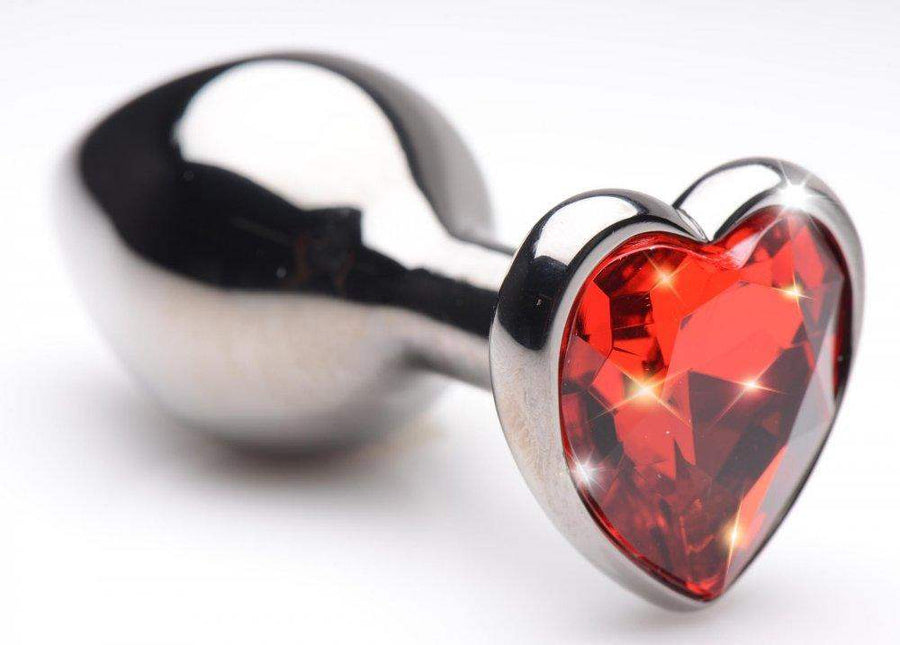


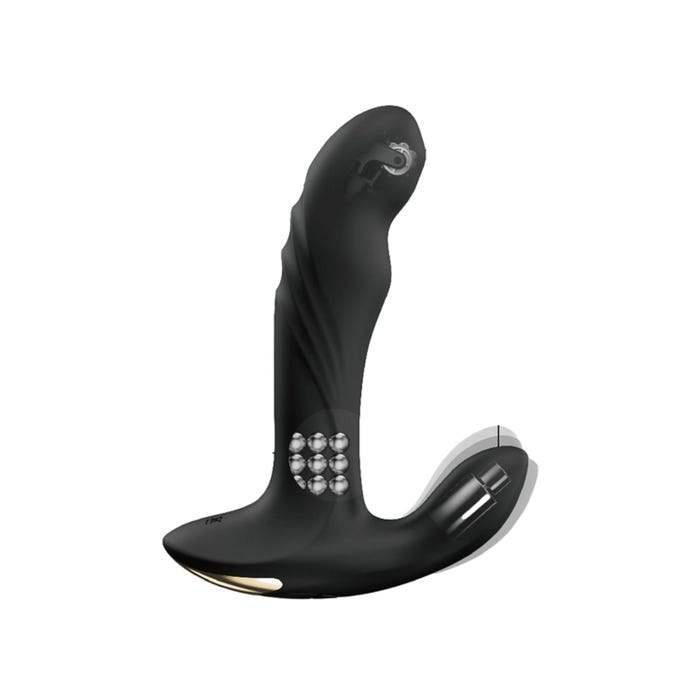



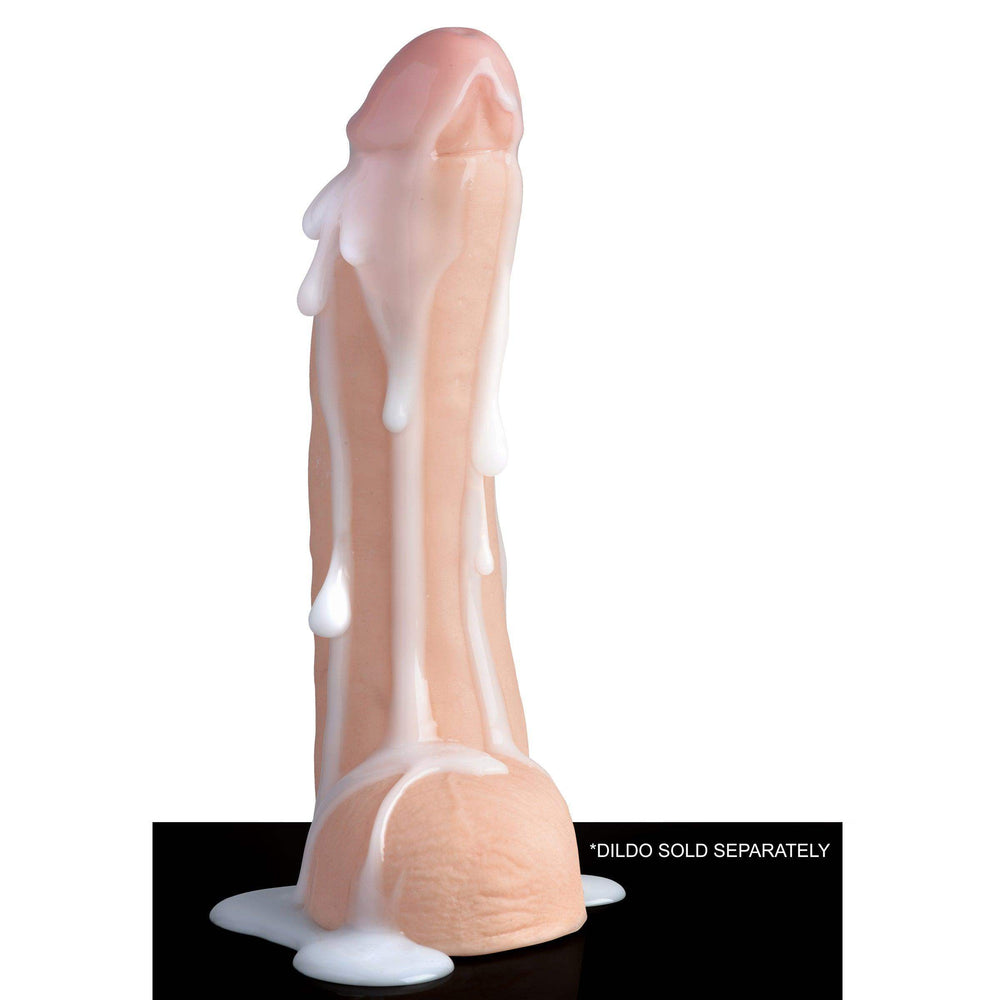



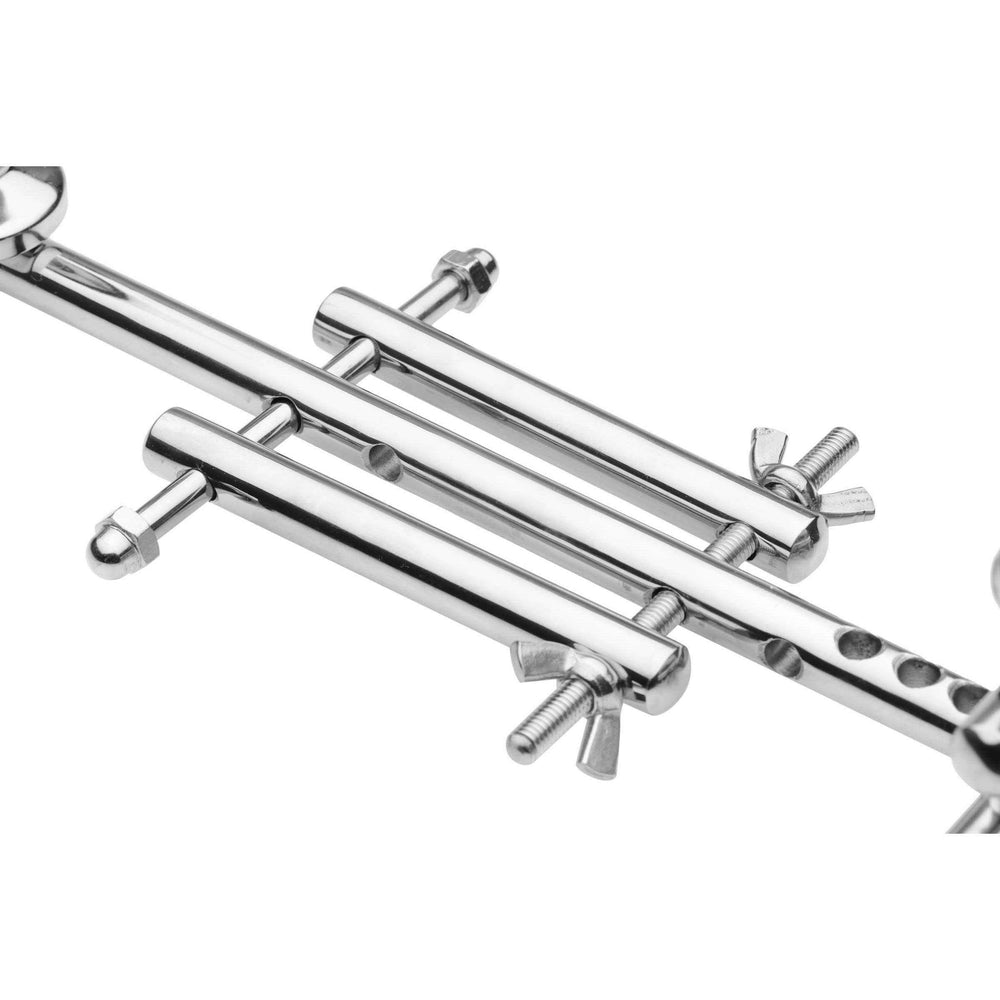
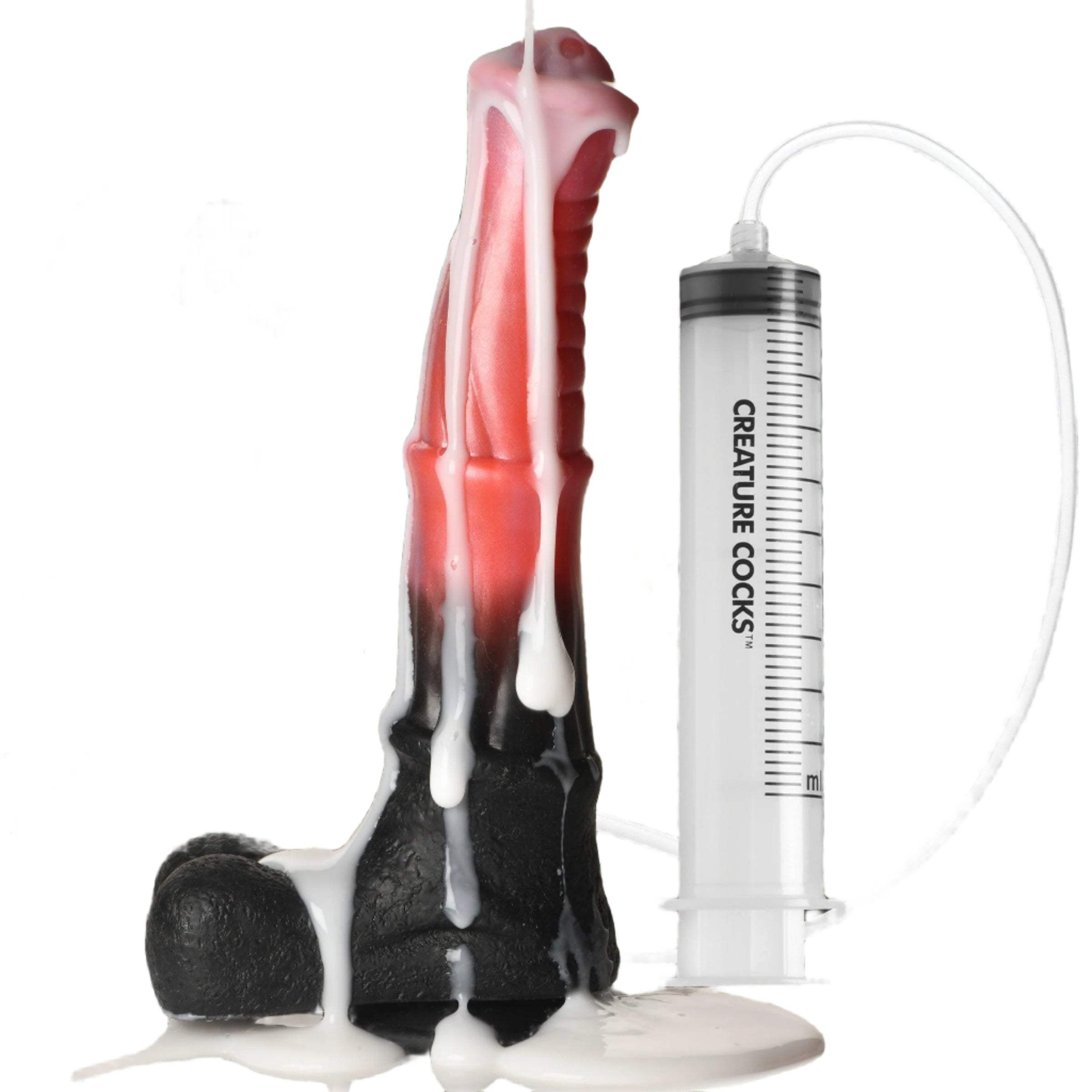
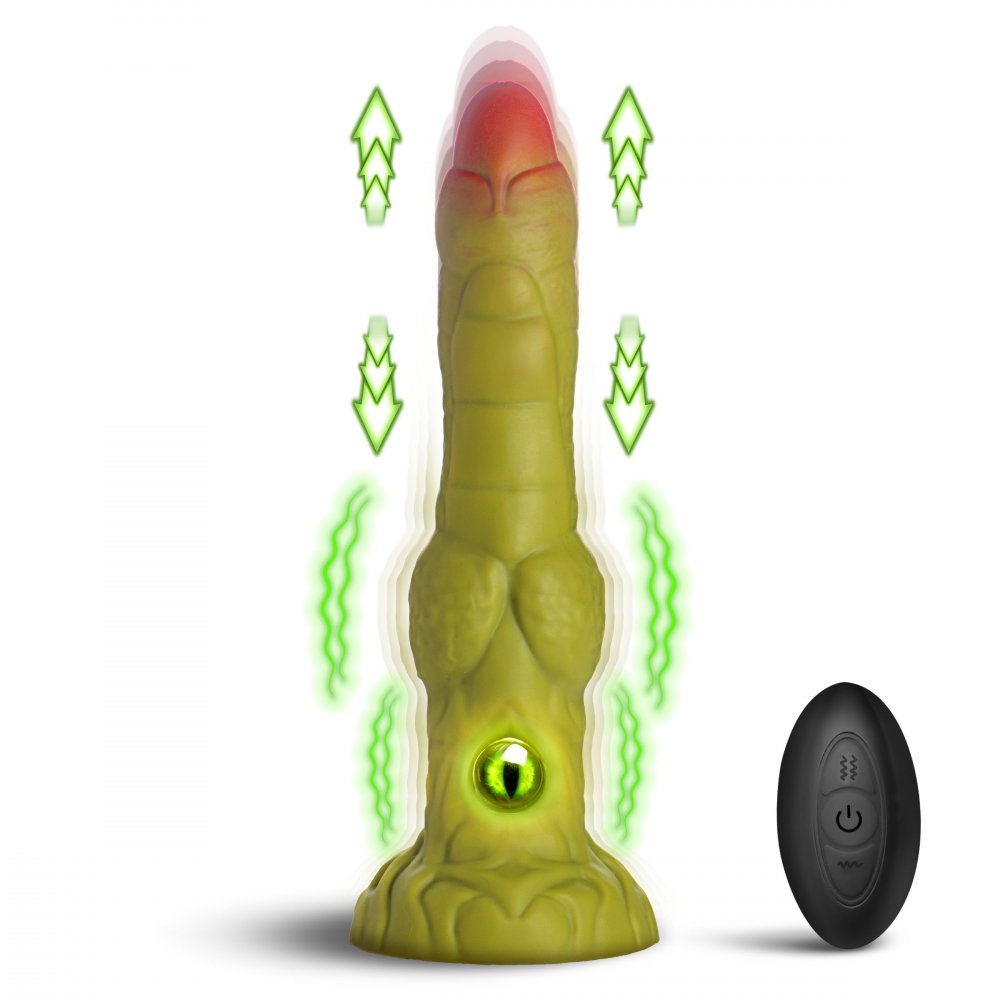
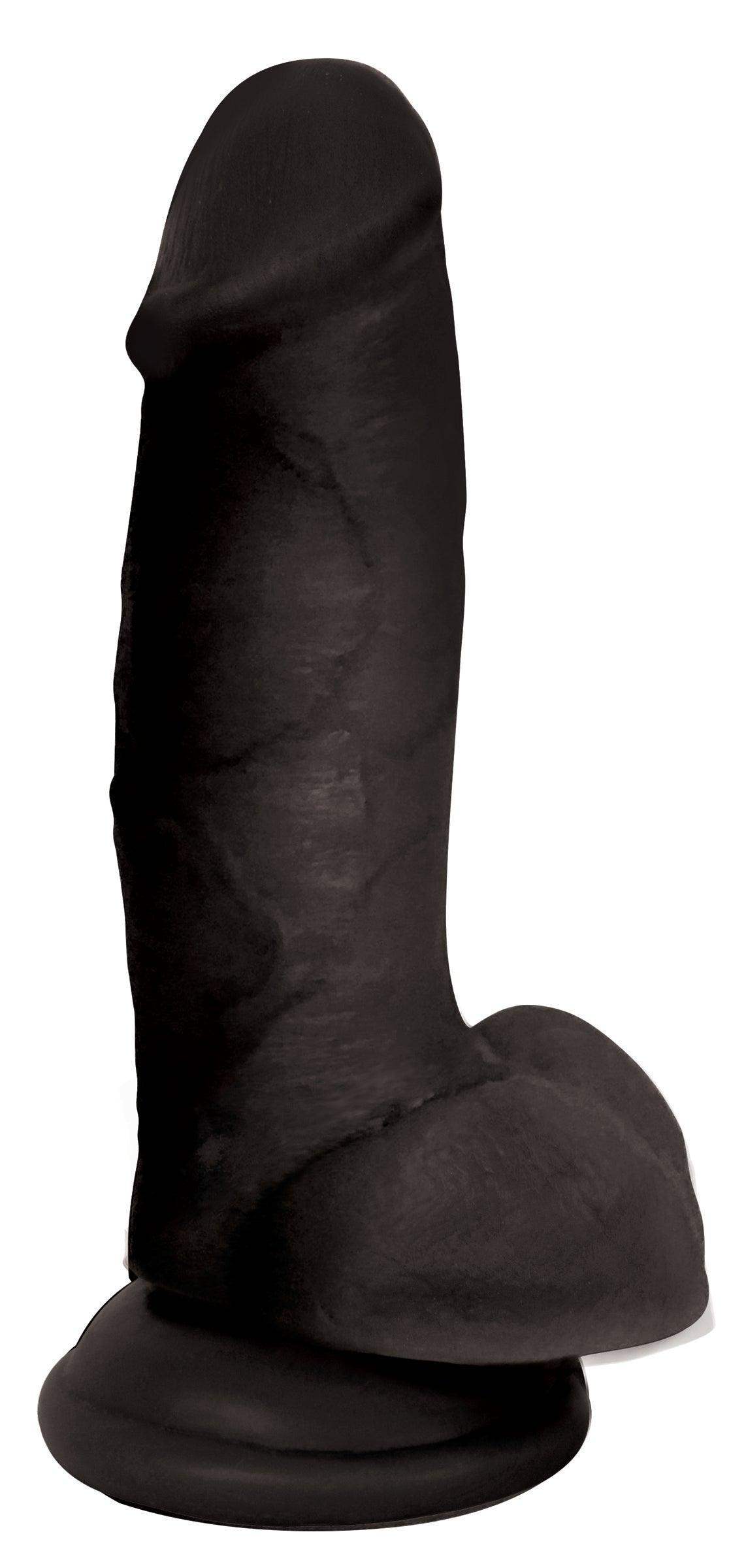




Leave a comment